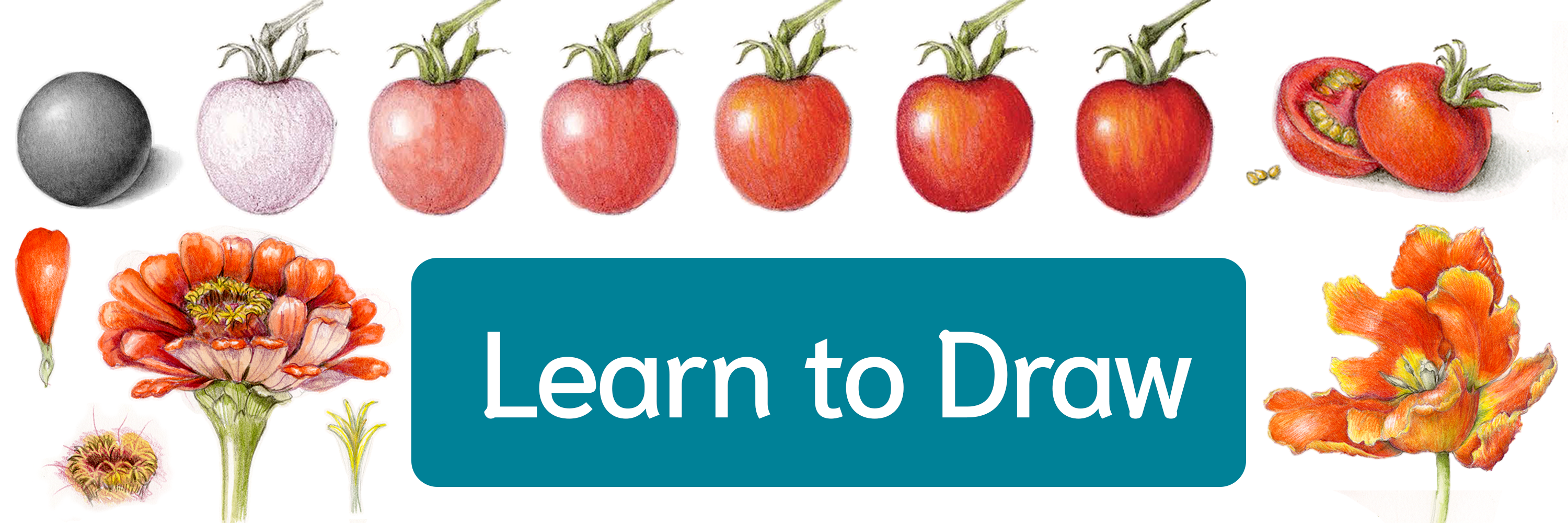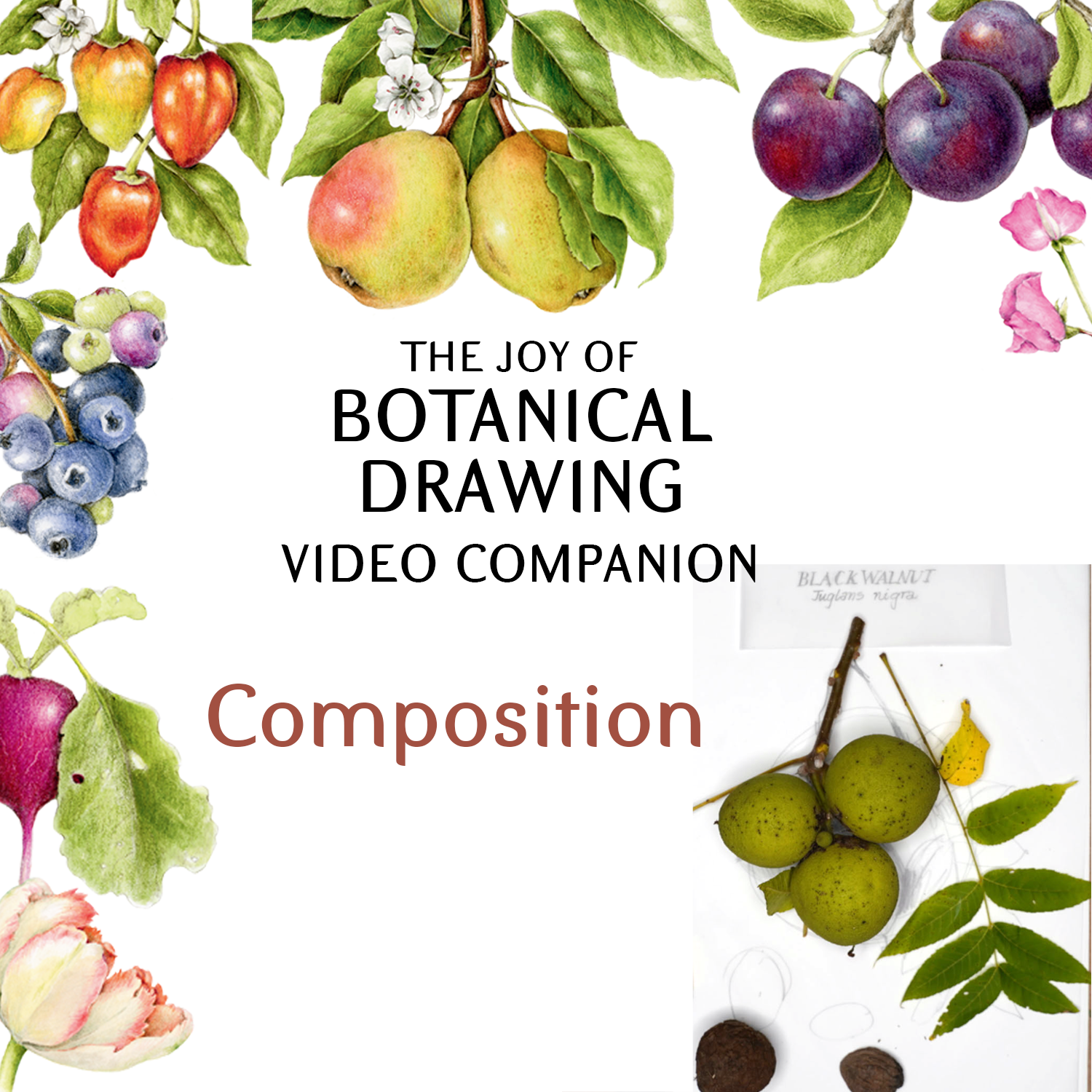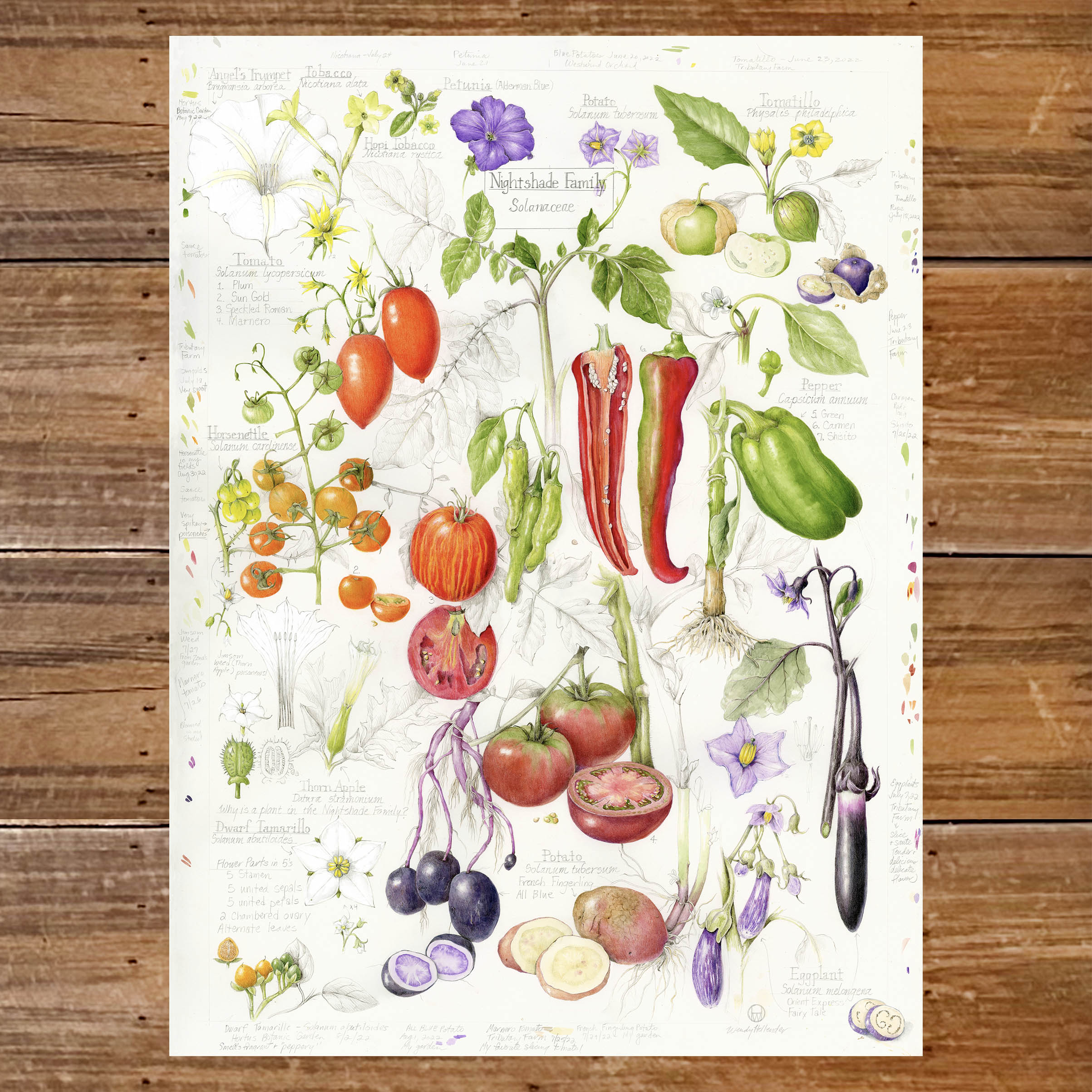
If you’re delving into botanical illustration, honing composition skills is key. (Our FREE Composition Quick Guide is a great place to start.)
Whether you’re a casual artist or an experienced illustrator, refining your compositions can elevate your work to new heights. In this guide, we’ll explore four essential tips to enhance your botanical illustrations:
1. Visualize Your Composition
2. Embrace the Center
3. Utilize 3D Techniques
4. Evaluate and Adjust
1. Visualize Your Composition
Visually seeing the ideas in my head laid out on paper (or on screen) is a crucial step for me in creating a final composition that I enjoy.
These are 4 techniques I use to visualize my options before deciding on a final composition:
a. Physical Subjects

Experiment by moving physical components of your subject around your page to find the optimal arrangement. You may want to use pins, tape, clips, prongs, or other implements to set up your subject. (Find more tips for setting up your subject here.)
b. Tracing Paper

Sketch each component separately on tracing paper and rearrange them to explore various compositions. Take photos for comparison.
c. Thumbnail Sketches
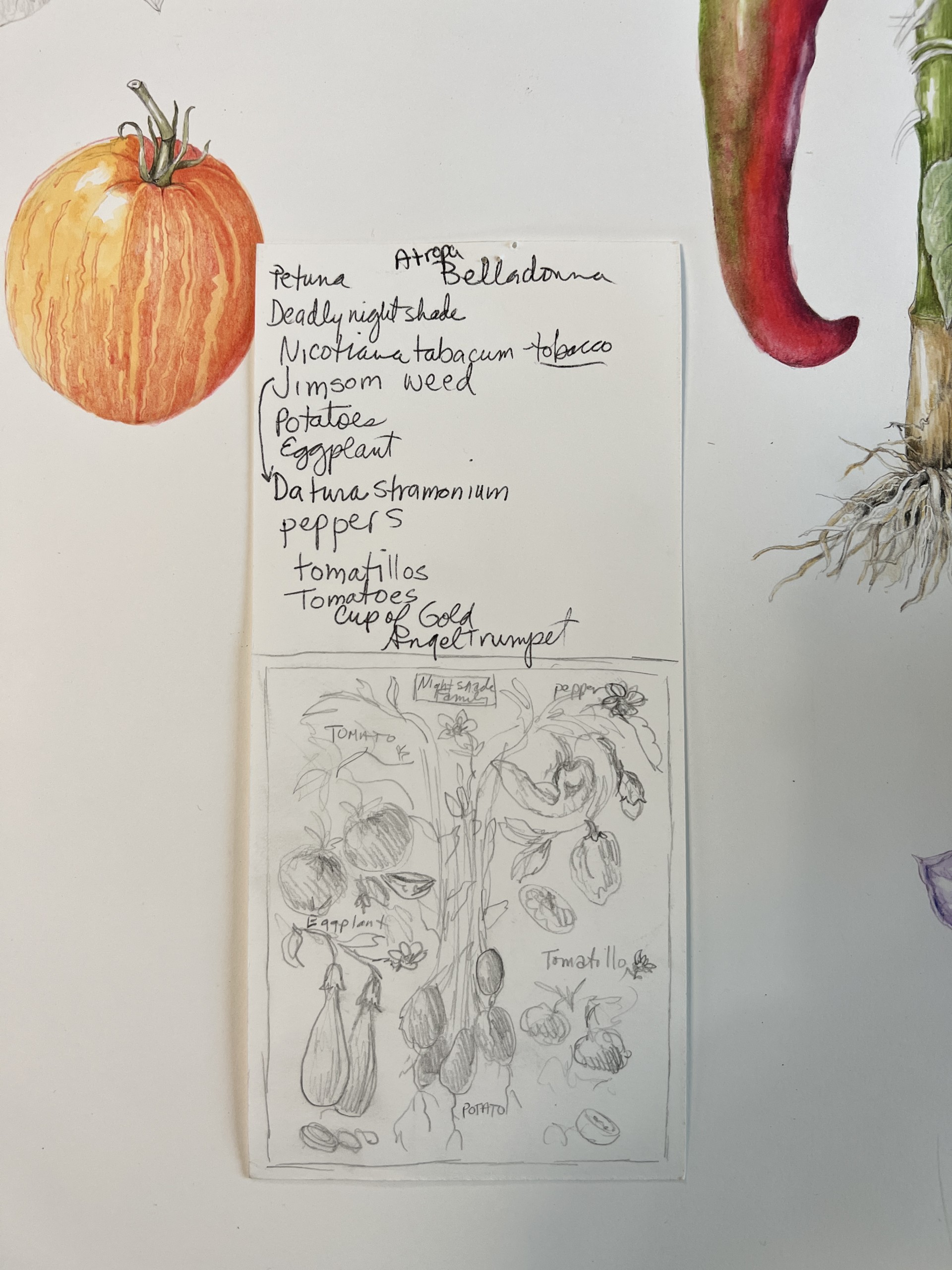
Create multiple rough sketches of potential compositions on a blank page, then choose the one that resonates most.
d. Photoshop

If you have scans of previous work you’ve done, you can drop them into Photoshop to try out different arrangements. If you don’t have personal scans, you can do a quick google search for placeholder images to use instead.
Arrange the components (each on their own layer), and save a copy (as a .jpg or .png) when you like how it looks. Save copies of different arrangements to compare and choose which you like best. When you decide on a final arrangement, you can print out a copy to reference at your drawing table.
Play around! There are many ways to arrange your composition, so have fun trying out a few different layouts before you commit.
2. Embrace the Center
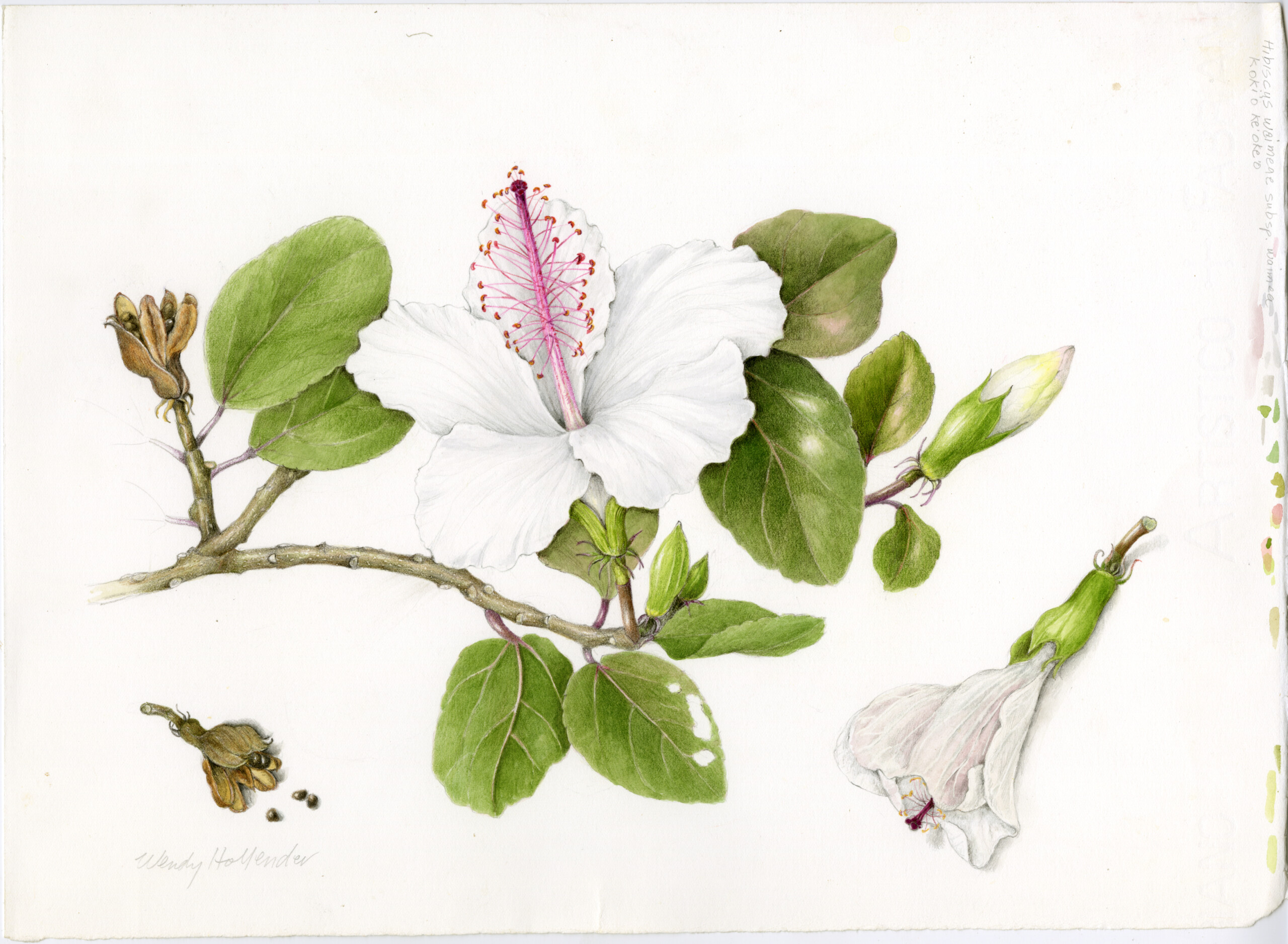
A blank page can feel daunting, but don’t let overwhelm stop you from brightening the world with your creations. (If your inner critic is the loudest voice in your head, click here for ways to keep it quiet.)
The center of the page can be an intimidating space, but it can also be a powerful location for your subject. Don’t hesitate to utilize it to create balanced and impactful compositions. (Find out more about balance in compositions here.)
3. Utilize 3D Techniques

Enhance the three-dimensional quality of your illustrations by incorporating these techniques:
-Use a full range of values and saturation to bring depth to your focal point.
–Define overlaps and employ contrast to guide the viewer’s eye.
-Start with a light graphite pencil outline before adding colored pencil toning. For the most three-dimensional looking forms, tone your drawing with colored pencil in the shadow color of your subject before you add its local color and pattern. (Learn more about colors here.)
–Avoid creating dark outlines, as they can detract from the natural look of your subject.
By honing these techniques, you can create botanical illustrations that truly come to life. Try these 5 warm-up exercises to get started.
4. Evaluate and Adjust
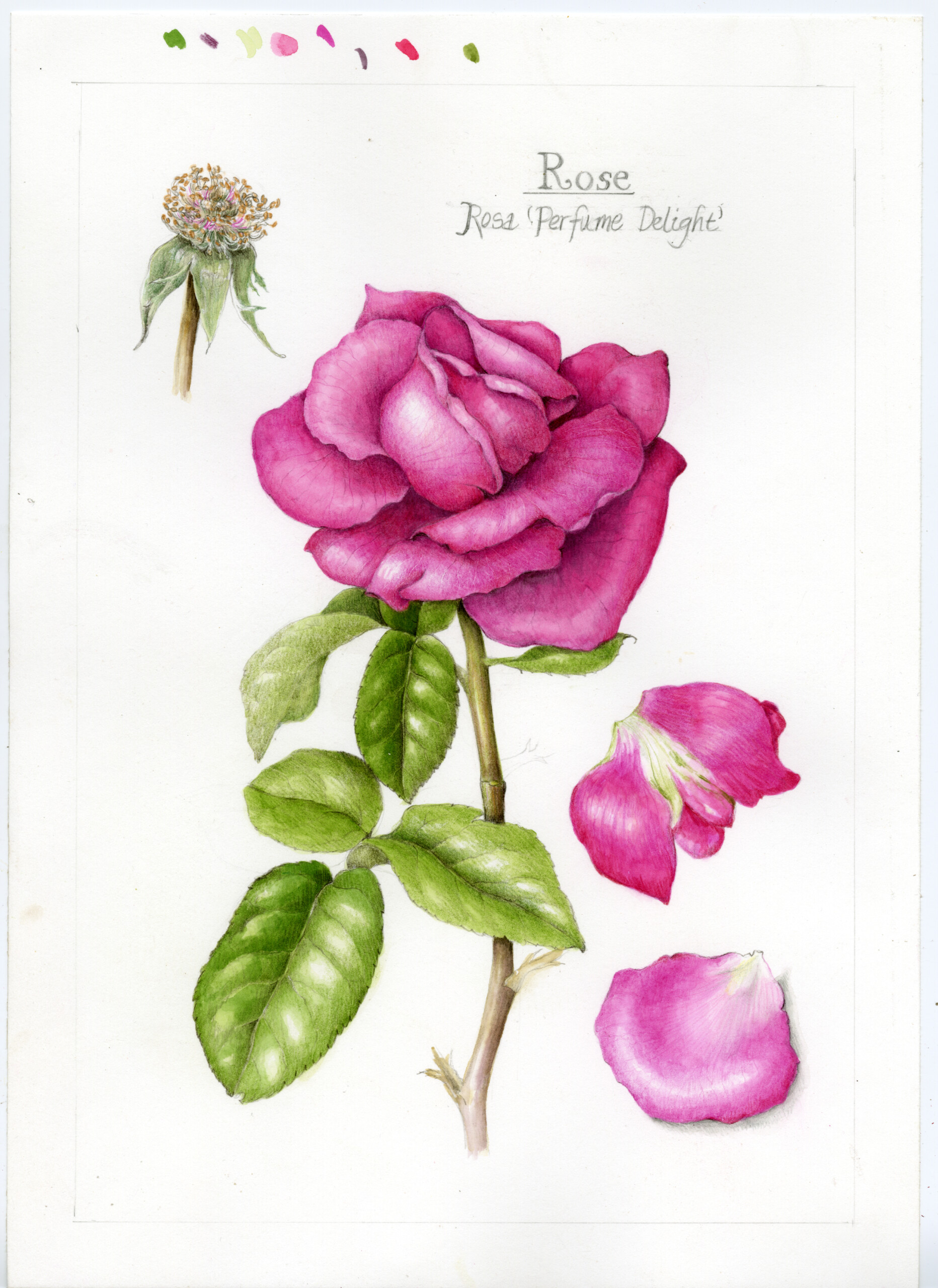
Throughout the drawing process, continually assess your work using these 10 questions. Make necessary adjustments to refine your composition.
For (FREE) step-by-step instructions on creating realistic botanical illustrations, explore our free tutorial featuring tulips as a subject.
Learn More

Honing composition is a journey that requires experimentation, practice, and a keen eye for detail. Whether you’re just starting or seeking to refine your skills, these tips will help you create botanical illustrations that captivate and inspire. Unlock your creative potential and embark on your artistic journey today.
There is so much that tulips can teach us!
Watch the recording from this workshop and learn how to create a pleasing composition by drawing a realistic tulip… Learn more
Get RECORDING of Composition & Focal Point with Tulips Zoom Workshop Here

